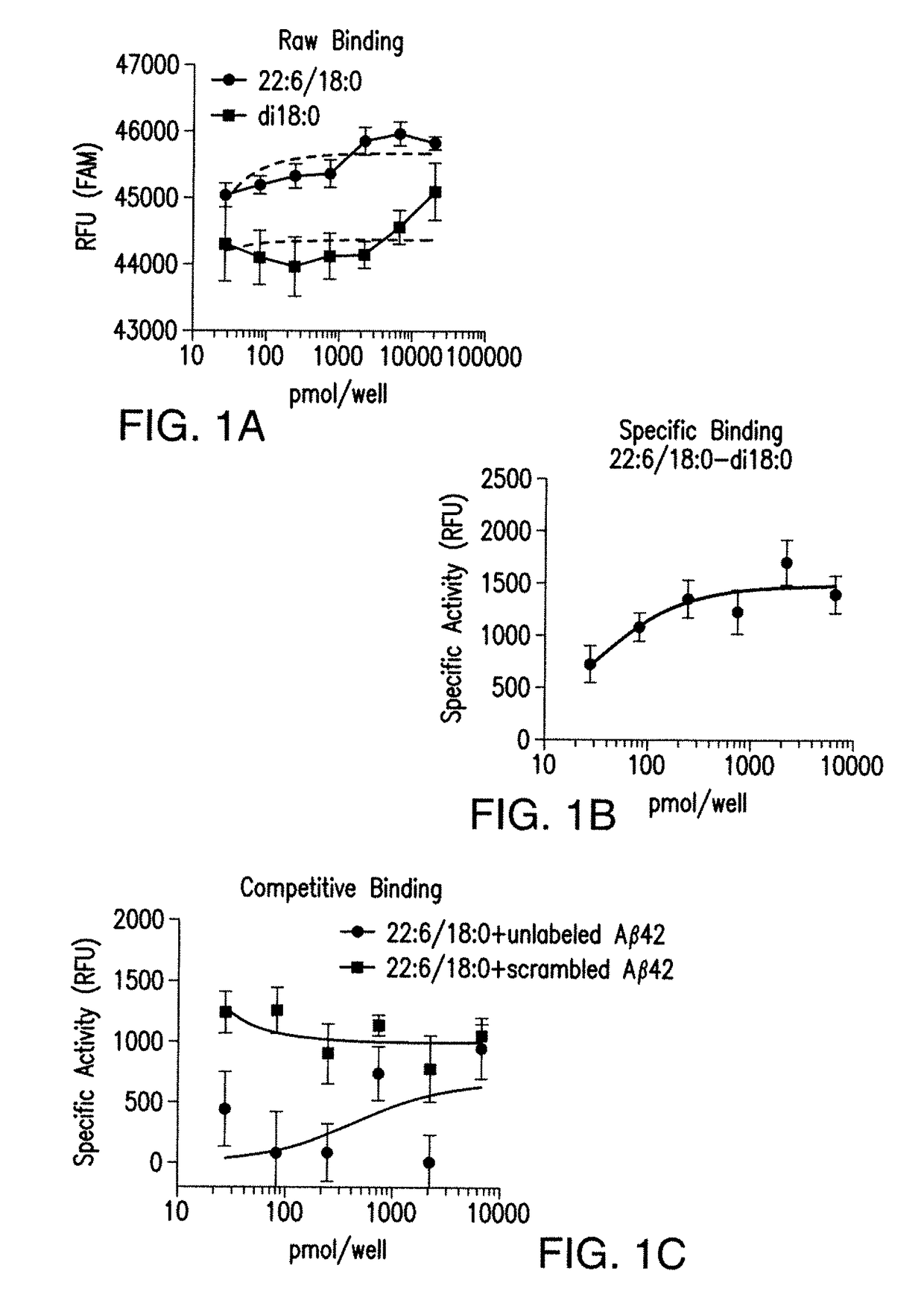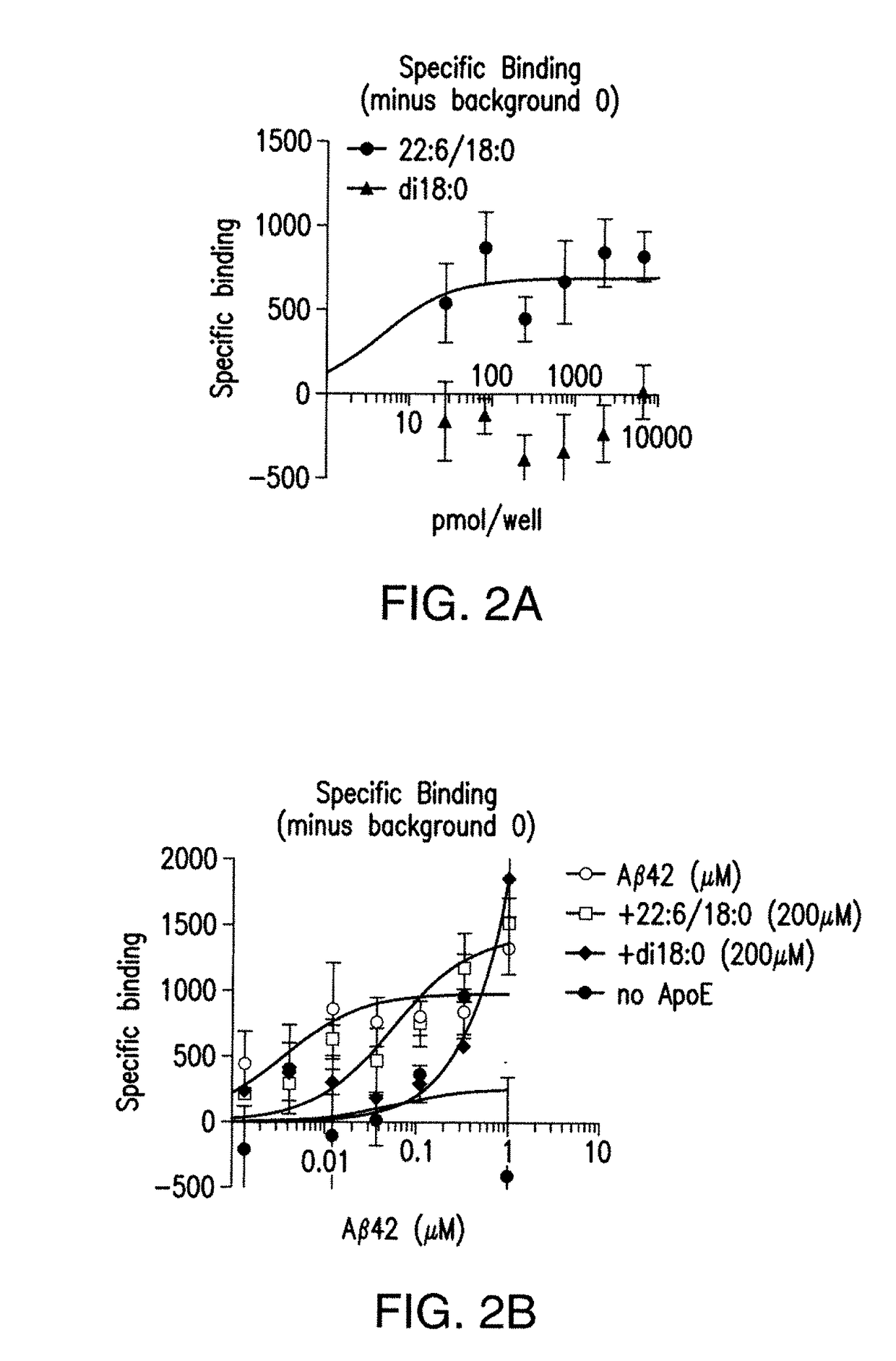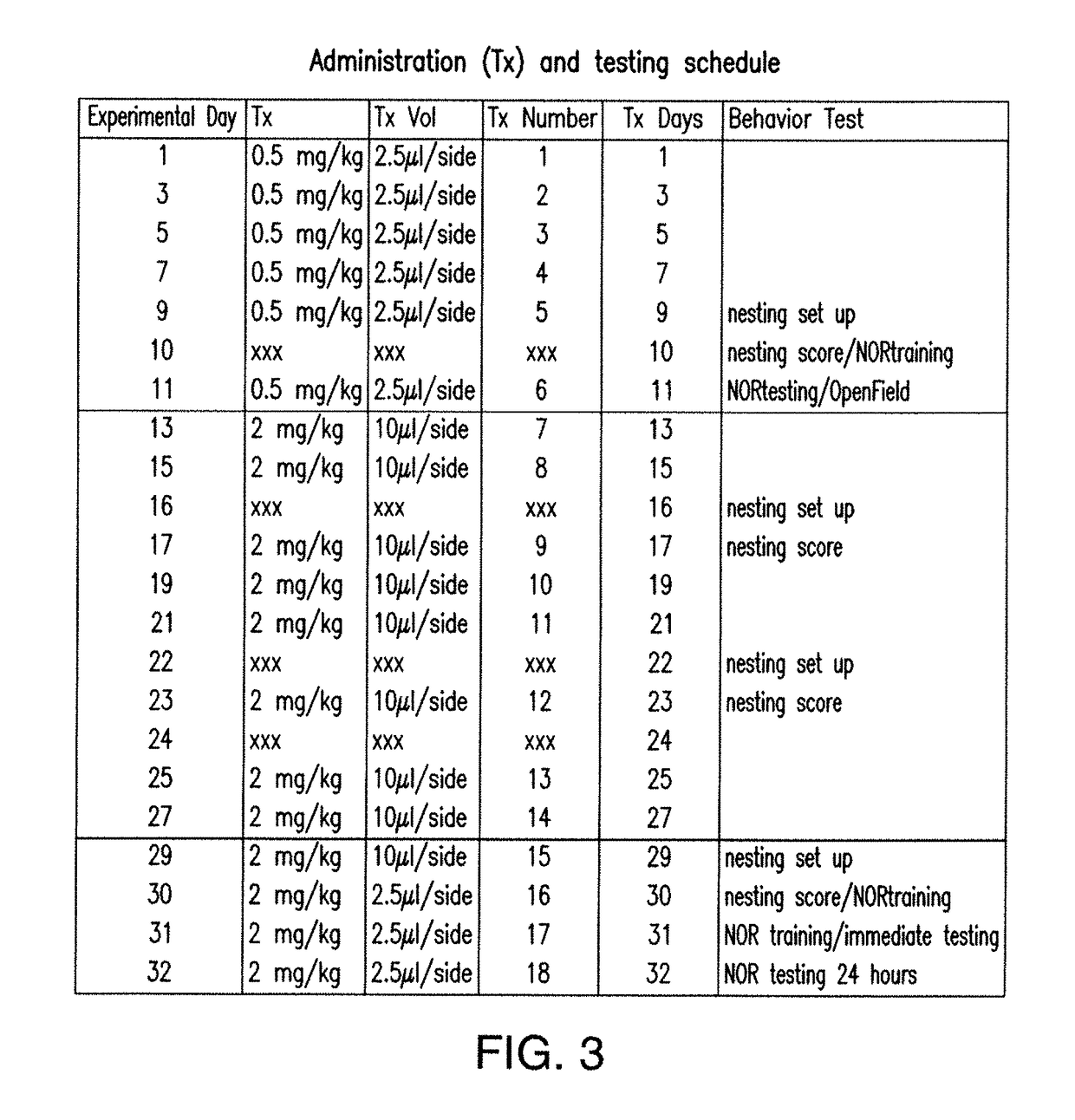Disruption of the interaction between amyloid beta peptide and dietary lipids
a technology of which is applied in the field of disrupting the interaction between amyloid beta peptide and dietary lipids, can solve the problems of inability to lipophilize, ineffective efficacy of oral dha supplementation in human clinical trials, and inability to understand the mechanism underlying this promising correlation, so as to improve the access to the central nervous system
- Summary
- Abstract
- Description
- Claims
- Application Information
AI Technical Summary
Benefits of technology
Problems solved by technology
Method used
Image
Examples
example 2
7. DETERMINATION OF SPECIFICITY
[0128]Experiments can be performed to further validate the Aβ / DHA / apoE interaction and to determine the specificity for binding between lipid species, different forms and lengths of Aβ peptide and different apoE isoforms. If the AD specific pathogenic Aβ42 and apoE4 alter DHA binding, data can implicate this complex in disease pathology. Studies can be executed to determine the requirement of double bonds and acyl chain length for Aβ binding. It is also possible that other commonly found Aβ species Aβ38, Aβ40, Aβ42, are specific for different acyl chain lengths with specific unsaturation requirements. Specifically, the hypotheses that Aβ38 binds arachidonic acid containing lipids (20:4); Aβ40 binds eicosapentaenoic acid (20:5) containing lipids and Aβ42 binds selectively to DHA 22:6 containing lipids, can be tested. Specificity of lipid for Aβ binding can also be determined using this assay as could the specific conformer / species of Aβ (i.e., Aβ40, Aβ...
example 6
11. ADMINISTRATION OF SDPC IS EFFECTIVE IN VIVO FOR PARTIAL RESCUE OF AD ASSOCIATED PHENOTYPES IN A MOUSE MODEL OF THE DISEASE TRANSGENIC FOR HUMAN APP WITH THE SWEDISH MUTATION (APPSW+)
[0132]11.1 Materials and Methods
[0133]SDPC was obtained from Avanti Polar Lipids (850472C) in chloroform, dried under vacuum conditions and resuspended in 0.9% saline (0.9% sodium chloride injection, USP, NDC 0409-7983-61, Hospira) containing 0.2% (weight:volume) methyl cellulose (average Mn 40,000, viscosity: 400 cP, CAS 9004-67-5, Sigma-Aldrich 274429) to aid in solubilization. A control solution of 0.9% saline containing 0.2% methyl cellulose was prepared at the same time without SDPC. A concentration of 3 mg / ml was used for doses 1-15 and 12 mg / ml was used for doses 16-18 (FIG. 3). Brief (3-5 minutes) bath sonication was used to improve solubility of 12 mg / ml concentration.
[0134]Mice were treated for 10 days at a low dose of SDPC intranasally administered 2.5 uL each nostril (5 μL total dose) fo...
PUM
| Property | Measurement | Unit |
|---|---|---|
| weight | aaaaa | aaaaa |
| pH | aaaaa | aaaaa |
| temperature | aaaaa | aaaaa |
Abstract
Description
Claims
Application Information
 Login to View More
Login to View More - R&D
- Intellectual Property
- Life Sciences
- Materials
- Tech Scout
- Unparalleled Data Quality
- Higher Quality Content
- 60% Fewer Hallucinations
Browse by: Latest US Patents, China's latest patents, Technical Efficacy Thesaurus, Application Domain, Technology Topic, Popular Technical Reports.
© 2025 PatSnap. All rights reserved.Legal|Privacy policy|Modern Slavery Act Transparency Statement|Sitemap|About US| Contact US: help@patsnap.com



